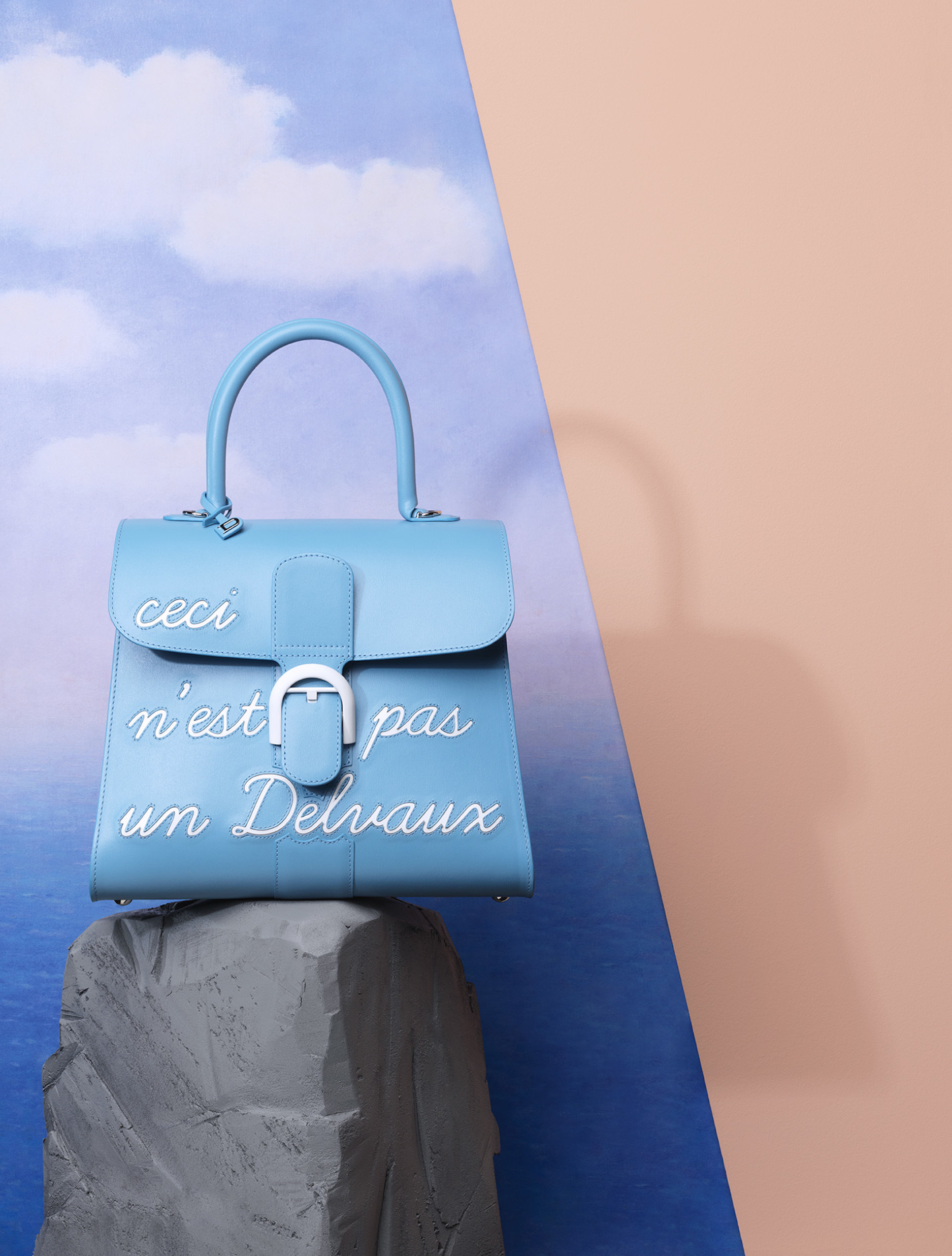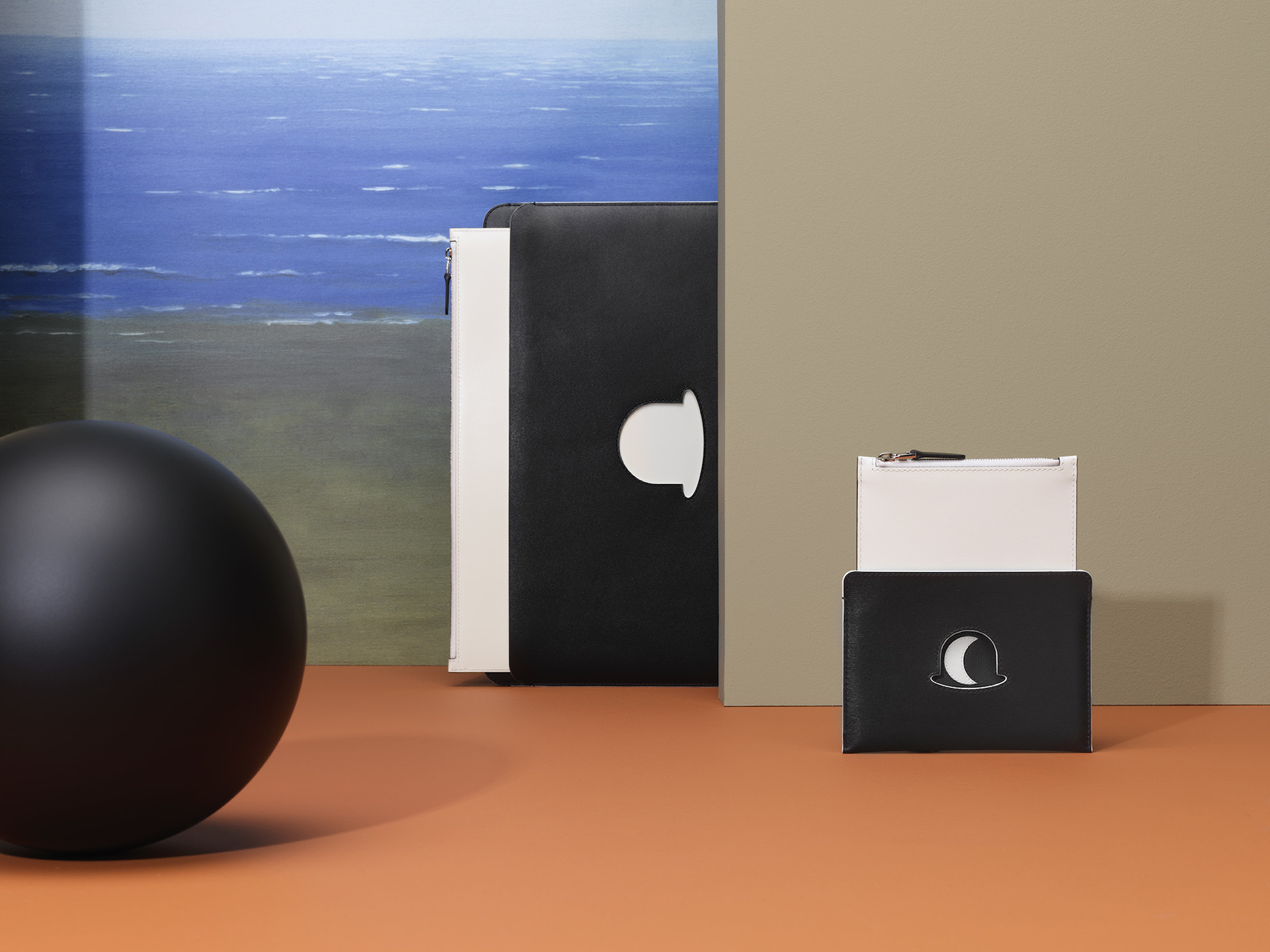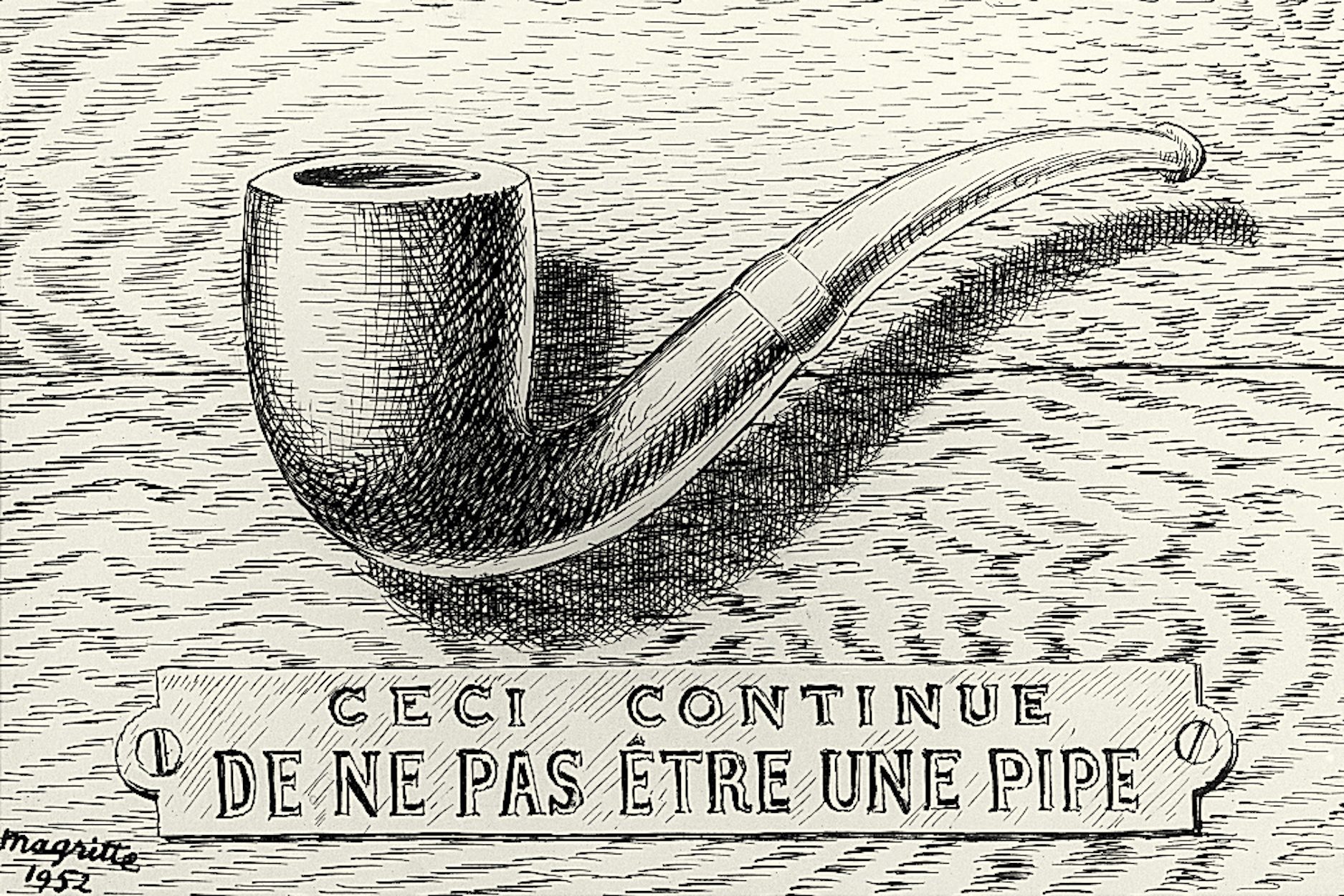Two creative forces teaming up to celebrate the refined, yet quirky, sensibilities of Belgian design. Delvaux, the luxury handbag brand founded in 1829 and official purveyor to the Royal Court of Belgium, has unveiled a 20-piece collection created with the Magritte Foundation—its fourth such collaboration since it first partnered with the institution dedicated to artist René Magritte for a retrospective of his work at the Centre Pompidou in Paris and the San Francisco Museum of Modern Art.
“Creating this collection with the Magritte Foundation and combining two aesthetics to create a luxurious product was just another step in furthering our relationship,” says Delvaux’s chairman and CEO Jean-Marc Loubier. “Partnering with an art foundation is a creative way for Delvaux and Magritte to bridge business with the meaning and heritage of the brand.”
For both parties, that included creating an assortment of accessories emphasizing Magritte’s legacy, while also strengthening Delvaux’ ties to the art community. Loubier explains that supporting “innovation and heritage” is paramount for the brand. Certainly, by evoking Magritte—a leader of the Surrealist movement who took a heightened, imaginative approach to depicting ordinary objects and situations—this collection easily hits both targets.
As for the collection itself, there are top-handle bags in sky blue emblazoned with the phrase “Ceci n’est pas un Delvaux” (a play on Magritte’s “The Treachery of Images”); pochettes featuring cut-outs of a bowler hat around a crescent moon (referencing “The Mysteries of the Horizon”); and the lining of a number of pieces made with a print of a clouded sky (a signature of the artist). As well, the Delvaux store on 781 Fifth Avenue in New York City currently houses an exhibition of five of Magritte’s drawings, reinforcing the bond between brand and artist.
“This collaboration is, above all, a homage between a great luxury player and a master painter,” says Charly Herscovici, the President of the Magritte Foundation. “It is the art of making things. It’s not that Delvaux adapted to Magritte, but how it took the colors of Magritte to transform pieces that make up this whimsical collaboration.”



